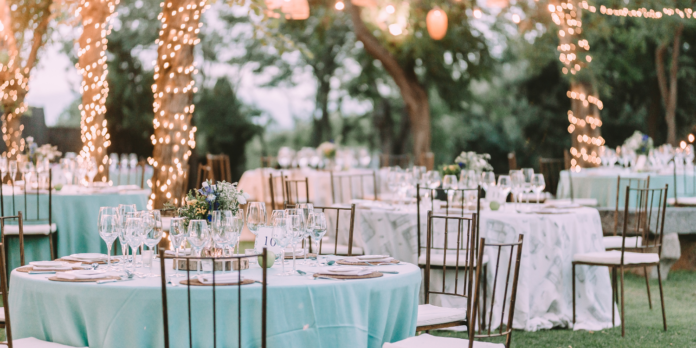Spring is in the air, the time of the year when not only flowers blossom but the promise of everlasting love blooms. The word spring itself evokes feelings of warmth and rebirth, promises of a brighter future, and the belief in unlimited opportunities. No wonder spring is the official kick-off to the wedding season, and one of the most popular times of the year for lovers to pledge their undying love. Addie Greyborne in Dedication to Murder, book nine in the Beyond the Page Bookstore Mystery series, is no different. While wedding bells ring throughout Greyborne Harbor, Addie slips into her white dress, her thoughts focused on a bright future. With fingers crossed that no calamity strike on her special day, she prepares for the walk of a lifetime down the aisle to meet Dr. Simon Emerson. After all, in preparation for her big day, Addie had conducted extensive research into hundreds of wedding traditions and superstitions, choosing “normal” ones and shunning the bizarre, weird, or just plain creepy.
She’d even booked the perfect venue with indoor and outdoor facilities in the event the ever-changing East Coast spring weather brought a surprise or two of its own. After reading that Hindus believe that rain on the wedding day symbolizes unity and relationship longevity, she breathed a sigh of relief. With such safeguards set in place, Addie reassured herself that with so many different traditions and beliefs, there was no set norm, and that she could pick what made her happy. And if wearing a white dress didn’t make her happy, there was nothing set in stone that she had to wear one.

In fact, the white dress had only been a tradition since Queen Victoria. Before that a multitude of dress colors were worn, and there was even an age-old adage for that: Married in white, you chose right; married in blue, your love is true; married in pearl, you will live a whirl; married in brown, you’ll live in a town; married in red, you’ll wish you were dead; married in yellow, ashamed of your fellow; married in pink, your heart will sink; married in grey, you will go away; married in black, you’ll wish you were back; married in green, embarrassed to be seen. Interestingly enough, a green dress also represented promiscuity and was frowned upon except in Ireland, where the same socially negative stigma wasn’t attached.
Even the day the wedding ceremony was to take place was considered significant and naturally a rhyme was created to help couples remember the best days to get married. Monday for wealth, Tuesday for health, Wednesday the best day of all, Thursday for losses, Friday for crosses, Saturday for no luck at all, which is interesting because in the twenty-first century, Saturday is the most popular day of the week for weddings.
Through her discoveries, Addie kept her researchers hat on and learned some of the wedding superstitions well beyond the standard something old, something new, something borrowed, and something blue.
For example, Addie discovered that the tradition of couples not being allowed to see each other before their wedding ceremony came from the time of arranged marriages. It was feared that the partners might not find each other attractive and call off the wedding. The tradition of carrying the bride over the threshold began in medieval Europe, when it was believed that a bride was vulnerable to evil spirits through the soles of her feet. Therefore, to avoid evil spirits entering the house on her shoes, the groom would carry the bride into their new home. Ancient Greeks and Romans believed that a bride needed to wear a veil to obscure her face to make her less susceptible to the curses and hexes of witches and evil spirits who wanted to steal her happiness. According to Greek culture, that problem could be avoided if the bride tucked a sugar cube into her glove because sugar would sweeten her union.

The British believed a spider found in a wedding dress meant good luck, and ancient Romans studied pig entrails to determine the luckiest time to marry. Egyptian women pinched the bride on her wedding day, while Middle Eastern brides painted henna on their hands and feet to protect themselves from the evil eye. In Czechoslovakia peas are thrown at newlyweds instead of rice, and a Swedish bride puts a silver coin from her father and a gold coin from her mother in each shoe to ensure that she’ll never do without.
Addie discovered that a Finnish bride accompanied by an older married man representing a long marriage went door-to-door collecting gifts in a pillowcase. However, if a bride comes knocking at your door to claim her wedding gift, do not give her a sharp knife because it symbolizes a broken relationship and is bad luck to give as a wedding present. Addie also discovered that Moroccan women take a milk bath to purify themselves before their wedding ceremony, and in Holland, a pine tree is planted outside the newlyweds’ home as a symbol of fertility and luck. In Irish tradition, bells are an important part as it’s believed they keep evil spirits away. She read that particularly in Ireland, horseshoes are thought to bring good luck, and many brides wear horseshoe-shaped jewelry or include a horseshoe as part of their bridal bouquet. When Italian couples break a glass or vase on their wedding day, the number of glass shards represent the number of years they’ll be married.
She even found the reason why engagement and wedding rings are traditionally worn on the fourth finger of the left hand. It was because it was once thought that a vein in that finger led directly to the heart. A sapphire in a wedding ring meant marital happiness, but a pearl engagement ring was thought to be bad luck because its shape resembled a tear. In Victorian England, snake rings dotted with ruby eyes were popular wedding bands, and aquamarine represented marital harmony as it forecasted a long, happy marriage. Although, be warned, if the ring bearer or best man dropped the wedding rings, evil spirits would be released.

Just when Addie thought she’d discovered all there was to know about wedding traditions, she came across the meaning of the classic wedding rhyme: Something old, something new, something borrowed, and something blue. According to this Victorian rhyme, wearing something old represents the people close to the couple in hopes that their relationship will endure throughout the years. Something new is worn to represent future happiness and prosperity of the new couple, and something borrowed was usually something that a family member felt had significant monetary or emotional value. It was later returned to the family following the ceremony, which ensured great blessings. The something blue started out to be a ribbon in the bride’s hair to represent the bride’s faithfulness, but today it can be anything: a brooch, a necklace, a blue piece of fabric sown into the inside seam of the dress, but it’s generally a blue garter the bride wears under her dress.
Addie couldn’t let anything to chance, of course, and even looked up why the bride stands to the groom’s left during the ceremony. Apparently, this tradition came about so the groom could use his right hand to fight off other suitors with his sword or evil spirits who might want to challenge the union.
It appears those annoying spirits played a big role in the development of many of the rituals followed today. In spite of the traditions Addie incorporated into her wedding ceremony and throughout her special day to ward off evil spirits, nothing could have prepared or protected her from what awaited her at the end of the aisle. Definitely a surprise and one Addie could have done without.
A first edition of The Velveteen Rabbit provides bookshop owner Addie Greyborne a telling clue to a cold case in her family’s past . . .
Wedding bells are about to ring again in Greyborne Harbor, and as Addie slips into her white dress her thoughts are focused on a bright future with Dr. Simon Emerson. But a discovery in her attic leads her to startling revelations about the past. As the owner of Beyond the Page Books and Curios and a lifelong bibliophile, Addie is delighted to find a rare collection of classic children’s books gathering dust in a secret room beneath the rafters, including a first edition of The Velveteen Rabbit by Margery Williams. To her surprise, a handwritten inscription on the title page provides a clue to unraveling a complex mystery in Addie’s family . . .
But that’s only the first surprise in a series of shocking twists that will turn Addie’s vision of where her life is going and where she’s come from upside down—including a suspicious death in the present that suggests foul play.
Reprinted with Permission from Kensington Books.







